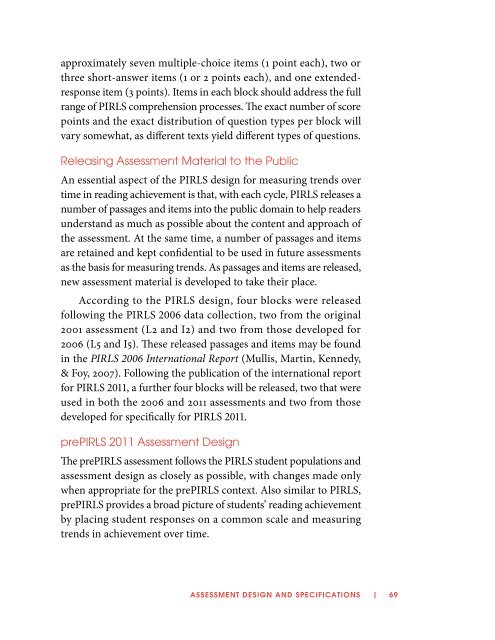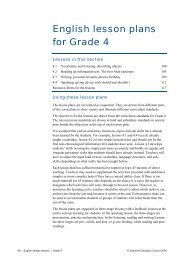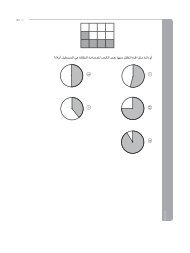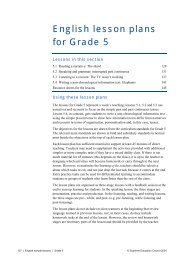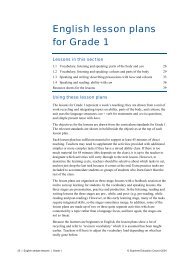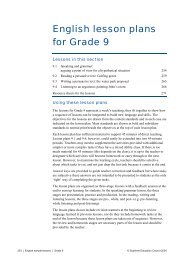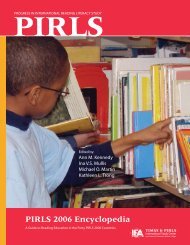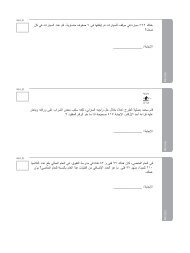PIRLS 2011 Assessment Framework - Proj AVI
PIRLS 2011 Assessment Framework - Proj AVI
PIRLS 2011 Assessment Framework - Proj AVI
- No tags were found...
Create successful ePaper yourself
Turn your PDF publications into a flip-book with our unique Google optimized e-Paper software.
approximately seven multiple-choice items (1 point each), two orthree short-answer items (1 or 2 points each), and one extendedresponseitem (3 points). Items in each block should address the fullrange of <strong>PIRLS</strong> comprehension processes. The exact number of scorepoints and the exact distribution of question types per block willvary somewhat, as different texts yield different types of questions.Releasing <strong>Assessment</strong> Material to the PublicAn essential aspect of the <strong>PIRLS</strong> design for measuring trends overtime in reading achievement is that, with each cycle, <strong>PIRLS</strong> releases anumber of passages and items into the public domain to help readersunderstand as much as possible about the content and approach ofthe assessment. At the same time, a number of passages and itemsare retained and kept confidential to be used in future assessmentsas the basis for measuring trends. As passages and items are released,new assessment material is developed to take their place.According to the <strong>PIRLS</strong> design, four blocks were releasedfollowing the <strong>PIRLS</strong> 2006 data collection, two from the original2001 assessment (L2 and I2) and two from those developed for2006 (L5 and I5). These released passages and items may be foundin the <strong>PIRLS</strong> 2006 International Report (Mullis, Martin, Kennedy,& Foy, 2007). Following the publication of the international reportfor <strong>PIRLS</strong> <strong>2011</strong>, a further four blocks will be released, two that wereused in both the 2006 and <strong>2011</strong> assessments and two from thosedeveloped for specifically for <strong>PIRLS</strong> <strong>2011</strong>.pre<strong>PIRLS</strong> <strong>2011</strong> <strong>Assessment</strong> DesignThe pre<strong>PIRLS</strong> assessment follows the <strong>PIRLS</strong> student populations andassessment design as closely as possible, with changes made onlywhen appropriate for the pre<strong>PIRLS</strong> context. Also similar to <strong>PIRLS</strong>,pre<strong>PIRLS</strong> provides a broad picture of students’ reading achievementby placing student responses on a common scale and measuringtrends in achievement over time.<strong>Assessment</strong> Design and Specifications | 69


